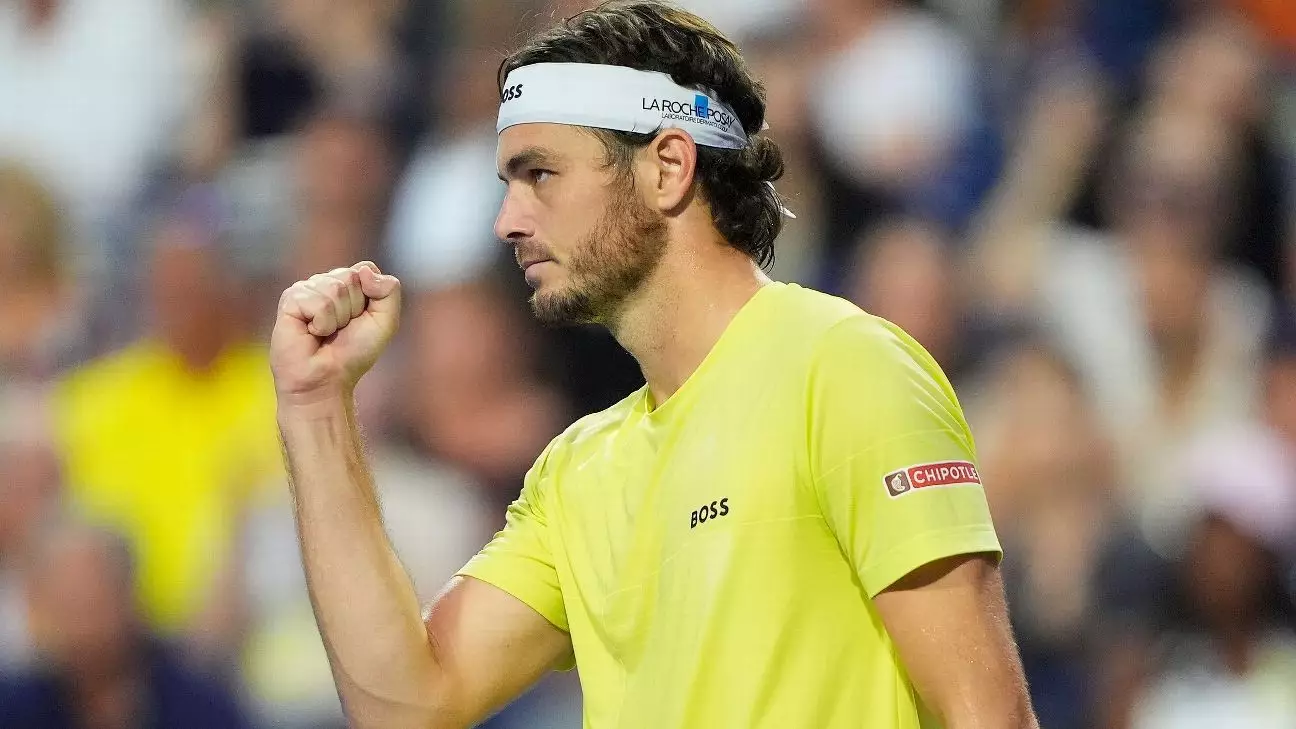In a remarkable turn of events at the National Bank Open, two American players, Taylor Fritz and Ben Shelton, carved a significant chapter in tennis history by reaching the semifinals—a feat unseen in ATP Masters 1000 tournaments in over a decade. The American resurgence, exemplified by their performances, signals not just a fleeting moment but potentially a new chapter in the sport’s evolving landscape. Fritz, a seasoned professional, demonstrated resilience and precision, while Shelton, heralded as the younger talent, showcased both raw talent and adaptability. Their victories are emblematic of a broader narrative: American tennis, often overshadowed in recent years, is quietly reasserting its competitive spirit.
Fritz’s commanding victory over Andrey Rublev was a masterclass in consistency and mental strength. His aggressive serve, marked by 20 aces, affirmed his reputation as an unwavering server and clutch performer. The victory was not merely about raw power but also about strategic court placement and mental fortitude—traits Fritz has fine-tuned over years of grinding on the tour’s demanding surfaces. His performance underscores the importance of experience and endurance in high-stakes matches, especially given the pressing clock of his career trajectory and the desire to claim a second Masters 1000 title.
Meanwhile, the rise of Shelton is equally noteworthy. At 22, his victory over Alex de Minaur was a display of youthful exuberance paired with strategic patience. Shelton’s comments about Fritz highlight a cultural shift—American players are no longer merely participants but contenders, ready to confront the sport’s titans on equal footing. Shelton’s acknowledgment of Fritz’s “big-match” mentality underscores the importance of mental toughness, a trait that often separates the good from the great. His enthusiasm and confidence inject optimism into the American tennis narrative, suggesting that fresh talent and fearlessness are catalyzing a renaissance.
Historical Significance and Future Implications
The upcoming semifinal between Fritz and Shelton is more than a matchup; it’s a rebirth of American tennis dominance in the world stage. The last time two Americans faced off in an ATP Masters 1000 semifinal was in 2010—a long drought that underscored the nation’s struggle to produce consistent top-tier contenders in recent years. This precedent-breaking encounter could serve as a catalyst, inspiring a new generation of players and rekindling national pride.
Furthermore, the tournament’s broader context reveals the shifting landscape of men’s tennis. The absence of heavy hitters like Novak Djokovic and Rafael Nadal, as well as other top players skipping the event, opens opportunities for emerging talents to demonstrate their mettle. Fritz’s game, complemented by his experience, stands in stark contrast to the unpredictable emergence of younger challengers like Shelton. The potential for an American final at such a prestigious event not only elevates the sport’s profile in the US but also challenges preconceived narratives about American players struggling against European and Russian rivals.
Shelton’s confidence that “one of us is going to get it” reflects a palpable optimism rooted in tangible progress. His words echo a sentiment that American tennis is on an upward trajectory, galvanized by a new wave of ambitious, skilled players who refuse to be overshadowed. The legacy of Andy Roddick’s US Open victory in 2003 might soon be joined by new champions emerging from the current crop—an inspiring prospect for fans and aspiring players alike.
Wider Tournament Dynamics and Broader Tennis Trends
While Fritz and Shelton earn deserved recognition, the tournament itself reveals interesting dynamics. Top seed Alexander Zverev faces an intense challenge from Karen Khachanov, hinting at a tournament where unpredictability is reigning supreme. The absence of many top players has leveled the playing field, favoring resilient competitors willing to adapt and seize opportunities as they arise.
The landscape is also shifting in terms of playing styles. Fritz’s aggressive serve-and-volley approach and Shelton’s versatile baseline game demonstrate the evolving nature of professional tennis. It’s a reminder that the sport rewards adaptability and mental toughness equally with technical skill. This flexibility is vital in a competitive environment where top players constantly push the boundaries of their capabilities.
The current tournament acts as a microcosm of the sport’s future—more dynamic, unpredictable, and inclusive of emerging talents. The American performances, in particular, symbolize a much-needed counterbalance to the dominance of European and Russian players. Whether or not Fritz and Shelton reach the final, their progress signifies hope and confidence that American tennis’s best days might be on the horizon once again.

